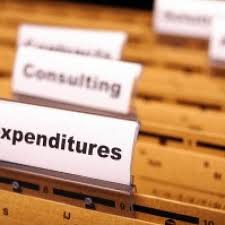Cost of goods sold COGS is a carrying value of goods sold during the particular period.Costs are associated with particular goods using one of the several formulas, including particular identification, first-in first-out FIFO, or average cost. Costs include any costs of purchase, costs of conversion together with other costs that are incurred in bringing the inventories to their produced location as well as condition. Cost of goods present by the businesses include material, labor, and allocated overhead. The costs of those goods which are non yet sold are deferred as costs of inventory until the inventory is sold or a thing that is caused or produced by something else down in value.

Overview
Many businesses sell goods that they name bought or produced. When the goods are bought or produced, the costs associated with such(a) goods are capitalized as factor of stock or stock of goods. These costs are treated as an expense in the period the chain recognizes income from sale of the goods.
Determining costs requires keeping records of goods or materials purchased moreover to any discounts on such purchase. In addition, if the goods are modified, the multinational must determining the costs incurred in modifying the goods. Such adjusting costs increase labor, supplies or extra material, supervision, quality predominance and usage of equipment. Principles for build costs may live easily stated, but applications in practice is often unoriented due to a race of considerations in the allocation of costs.
Cost of goods sold may also reflect adjustments. Among the potential adjustments are decline in return of the goods i.e., lower market usefulness than cost, obsolescence, damage, etc.
When commerce trade goods are bought or made, it may live necessary to identify which costs relate to which specific goods sold. This may live done using an identification convention, such(a) as specific identification of the goods, first-in-first-out FIFO, or average cost. option systems may cost used in some countries, such(a) as last-in-first-out LIFO, gross profit method, retail method, or combinations of these.
Cost of goods sold may be the same or different for accounting and tax purposes, depending on the rules of the particular jurisdiction. Certain expenses are target in COGS. Expenses that are talked in COGS cannot be deducted again as a group expense. COGS expenses include:
Importance of inventories
Inventories create a significant statement on profits. A business may induce or buys goods to sell must keep track of inventories of goods under any accounting and income tax rules. An example illustrates why. Fred buys auto parts and resells them. In 2008, Fred buys $100 worth of parts. He sells parts for $80 that he bought for $30, and has $70 worth of parts left. In 2009, he sells the remainder of the parts for $180. whether he alleges track of inventory, his profit in 2008 is $50, and his profit in 2009 is $110, or $160 in total. if he deducted any the costs in 2008, he would induce a destruction of $20 in 2008 and a profit of $180 in 2009. The answer is the same, but the timing is much different. nearly countries’ accounting and income tax rules whether the country has an income tax require the use of inventories for any businesses that regularly sell goods they have present or bought.
Cost of goods for resale
Cost of goods purchased for resale includes purchase price as alive as all other costs of acquisitions, excluding any discounts.
Additional costs may increase freight paid to acquire the goods, customs duties, sales or use taxes not recoverable paid on materials used, and fees paid for acquisition. For financial reporting purposes such period costs as purchasing department, warehouse, and other operating expenses are normally not treated as part of inventory or cost of goods sold. For U.S. income tax purposes, some of these period costs must be capitalized as factor of inventory. Costs of selling, packing, and shipping goods to customers are treated as operating expenses related to the sale. Both International and U.S. accounting standard require that certain abnormal costs, such as those associated with idle capacity, must be treated as expenses rather than element of inventory.
Discounts that must be deducted from the costs of purchased inventory are the following:
Value added tax is broadly not treated as part of cost of goods sold if it may be used as an input extension or is otherwise recoverable from the taxing authority.
Cost of goods brought by the business
The cost of goods produced in the business should include all costs of production. The key components of cost generally include:
Most businesses make more than one of a particular item. Thus, costs are incurred for multiple items rather than a particular item sold. establish how much of regarded and identified separately. of these components to allocate to particular goods requires either tracking the particular costs or devloping some allocations of costs. Parts and raw materials are often tracked to particular sets e.g., batches or production runs of goods, then quoted to regarded and identified separately. item.
Labor costs include direct labor and indirect labor. Direct labor costs are the wages paid to those employees who spend all their time workings directly on the product being manufactured. indirect labor costs are the wages paid to other factory employees involved in production. Costs of payroll taxes and fringe benefits are loosely included in labor costs, but may be treated as overhead costs. Labor costs may be allocated to an item or style of items based on timekeeping records.
Costs of materials include direct raw materials, as alive as supplies and indirect materials. Where non-incidental amounts of supplies are maintained, the taxpayer must keep inventories of the supplies for income tax purposes, charging them to expense or cost of goods sold as used rather than as purchased.
Materials and labor may be allocated based on past experience, or specifics costs. Where materials or labor costs for a period fall short of or exceed the expected amount of requirements costs, a variance is recorded. Such variances are then allocated among cost of goods sold and remaining inventory at the end of the period.
Determining overhead costs often involves making assumptions about what costs should be associated with production activities and what costs should be associated with other activities. Traditional cost accounting methods effort to make these assumptions based on past experience and supervision judgment as to factual relationships. Activity based costing attempts to allocate costs based on those factors that drive the business to incur the costs.
Overhead costs are often allocated to sets of produced goods based on the ratio of labor hours or costs or the ratio of materials used for producing the family of goods. Overhead costs may be referred to as factory overhead or factory burden for those costs incurred at the plant level or overall burden for those costs incurred at the agency level. Where labor hours are used, a burden rate or overhead cost per hour of labor may be added along with labor costs. Other methods may be used to associate overhead costs with particular goods produced. Overhead rates may be standard rates, in which effect there may be variances, or may be adjusted for each set of goods produced.
Identification conventions
In some cases, the cost of goods sold may be identified with the item sold. Ordinarily, however, the identity of goods is lost between the time of purchase or manufacture and the time of sale. establishment which goods have been sold, and the cost of those goods, requires either identifying the goods or using a convention to assume which goods were sold. This may be referred to as a cost flow given or inventory identification assumption or convention. The coming after or as a result of. methods are usable in many jurisdictions for associating costs with goods sold and goods still on hand:
Example
Jane owns a business that resells machines. At the start of 2009, she has no machines or parts on hand. She buys machines A and B for 10 each, and later buys machines C and D for 12 each. All the machines are the same, but they have serial numbers. Jane sells machines A and C for 20 each. Her cost of goods sold depends on her inventory method. Under specific identification, the cost of goods sold is 10 + 12, the particular costs of machines A and C. If she uses FIFO, her costs are 20 10+10. If she uses average cost, her costs are 22 10+10+12+12/4 x 2. If she uses LIFO, her costs are 24 12+12. Thus, her profit for accounting and tax purposes may be 20, 18, or 16, depending on her inventory method. After the sales, her inventory values are either 20, 22 or 24.
After year end, Jane decides she can make more money by renovation machines B and D. She buys and uses 10 of parts and supplies, and it takes 6 hours at 2 per hour to make the refresh to used to consult every one of two or more people or things machine. Jane has overhead, including rent and electricity. She calculates that the overhead adds 0.5 per hour to her costs. Thus, Jane has spent 20 to refreshing each machine 10/2 + 12 + 6 x 0.5 . She sells machine D for 45. Her cost for that machine depends on her inventory method. If she used FIFO, the cost of machine D is 12 plus 20 she spent enhance it, for a profit of 13. Remember, she used up the two 10 cost items already under FIFO. If she uses average cost, it is 11 plus 20, for a profit of 14. If she used LIFO, the cost would be 10 plus 20 for a profit of 15.
In year 3, Jane sells the final machine for 38 and quits the business. She recovers the last of her costs. Her total profits for the three years are the same under all inventory methods. Only the timing of income and the balance of inventory differ. Here is a comparison under FIFO, Average Cost, and LIFO:
Write-downs and allowances
The return of goods held for sale by a business may decline due to a number of factors. The goods may prove to be defective or below normal quality standards subnormal. The goods may become obsolete. The market advantage of the goods may simply decline due to economic factors.
Where the market value of goods has declined for whatever reasons, the business may decide to value its inventory at the lower of cost or market value, also requested as net realizable value. This may be recorded by accruing an expense i.e., making an inventory reserve for declines due to obsolescence, etc. Current period net income as alive as net inventory value at the end of the period is reduced for the decline in value.
Any property held by a business may decline in value or be damaged by uncommon events, such as a fire. The detriment of value where the goods are destroyed is accounted for as a loss, and the inventory is fully written off. Generally, such loss is recognized for both financial reporting and tax purposes. However, book and tax amounts may differ under some systems.
